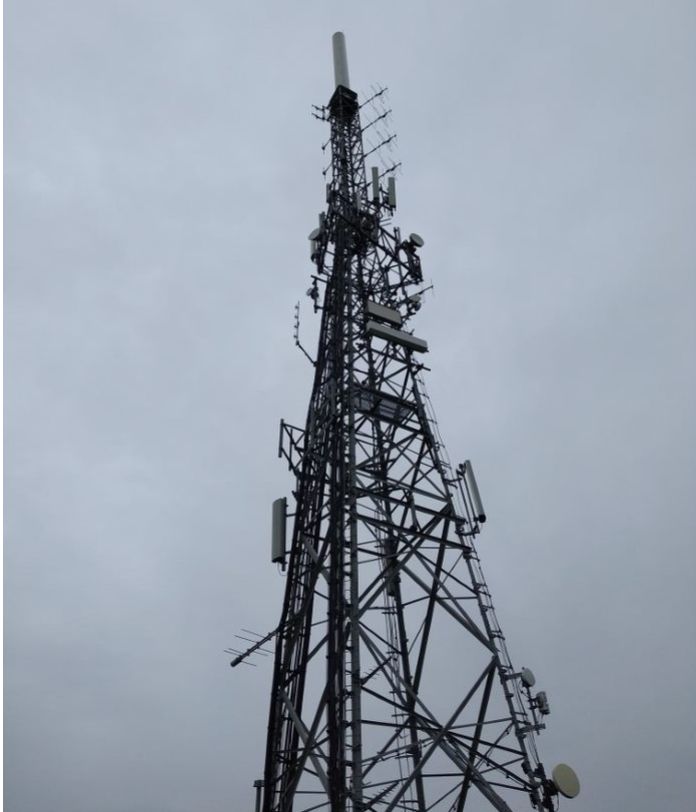This week Ofcom finished work on one of the biggest projects we’ve ever been involved with: the 700 MHz clearance programme. This project will end up bringing major benefits to people across the UK. But unlike much of our work, the fewer people who noticed that the project ever happened, the happier we are.
700 MHz clearance officially began in 2017, although we’d been planning for it since 2012. It involved moving Freeview TV channels out of the 700 MHz spectrum band to free up those airwaves for other uses – including mobile technology like 4G and 5G.
What is spectrum?
You can’t see or feel radio spectrum. But any device that communicates wirelessly needs it – such as televisions, mobile phones, car key fobs, baby monitors, wireless microphones and satellites. Spectrum is organised in bands. Each spectrum band has different properties that makes it better for some purposes – like covering a large area with a signal or delivering that signal into buildings – and less suitable for others.
Only a limited amount of spectrum is available, so it needs to be managed carefully. A big part of Ofcom’s role is to make sure that spectrum is used efficiently in the UK. It’s also our job to make sure that the different users of spectrum – such as TV broadcasters, mobile companies or musicians and performers – don’t cause interference to each other, which could cause disruption to people and businesses.
Why did this clearance need to happen?
Think about how you use your phone now compared to ten years ago. You probably use it more often than you used to, and you most likely use it for different activities – watching videos, playing games or ordering your shopping.All that increased usage involves more and more mobile data. Sending data to and from your phone over the airwaves requires additional spectrum. 700 MHz clearance needed to happen to free up more spectrum to carry this data.

Saddleworth Tower, a mast that serves areas in the north west of England.
What was involved?
Clearing the 700 MHz band for mobile meant many TV transmitters (the masts that broadcast TV to your home) needed to change the frequency they used. Ofcom planned the new frequencies for the TV transmitters. This was a complex job: all the new frequencies needed to ‘coexist’, meaning neighbouring transmitters didn’t interfere with each other. We also needed to negotiate agreements with other countries to make sure our spectrum use didn’t interfere with theirs.
When the TV transmitters changed frequencies, this meant millions of Freeview TV viewers had to retune their TV sets to pick up the new frequencies. Fortunately, retuning your TV is a simple and quick process that can be done using your TV remote control. Viewers were typically warned of any forthcoming changes to frequencies by a message that appeared on their TVs when they were switched on, reminding them when to retune.
One of the priorities for this project was to cause as little impact as possible on people’s TV viewing. If a retune didn’t work for viewer and they could no longer receive TV, a support phone line, website and online videos were available for people who had difficulties. In many cases in-home support was offered to viewers who had more challenging retune problems. Some viewers needed to replace their aerials – but this was a very small number of cases.
Making sure people still had access to their Freeview TV services was one of the reasons the project took so long. We staggered the work to minimise the disruption and avoid key events, like major sporting occasions.
As well as TV viewers, users of wireless microphones in the theatre and TV production industries also had to change their equipment to operate in new spectrum bands as a result of 700 MHz clearance.
Who did we work alongside?
Ofcom played a leading role in the work and oversaw the entire programme. But we weren’t the only organisation involved. We collaborated with partners to make sure we completed the project as smoothly as possible. This meant work was finished on schedule and under budget – a great achievement for such a large-scale programme of work.
Partner organisations included:
- Arqiva, which carried out the engineering necessary to change the frequencies on which transmitters were operating;
- DCMS, which provided the budget for the work, including funding for viewer support scheme and funding for PMSE users; and
- TV broadcasters, Digital UK and Freeview and DMSL, who participated in programme governance and working groups and helped deliver aspects of the programme such as viewer support.
What’s next?
Following the project’s completion, spectrum which is due to be auctioned in these frequencies can be used immediately after the auction. This means mobile companies will be able to use it to provide mobile services to customers.
A helicopter is used to replace a mast’s antenna, a necessary step in changing the frequencies of some masts.
